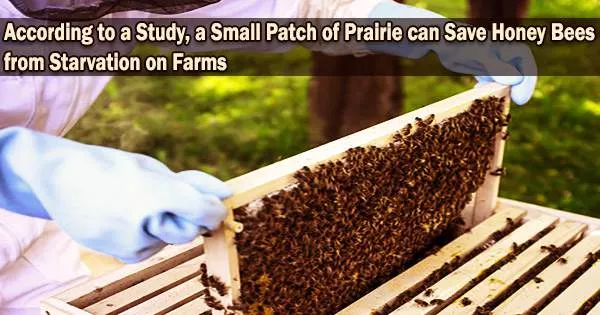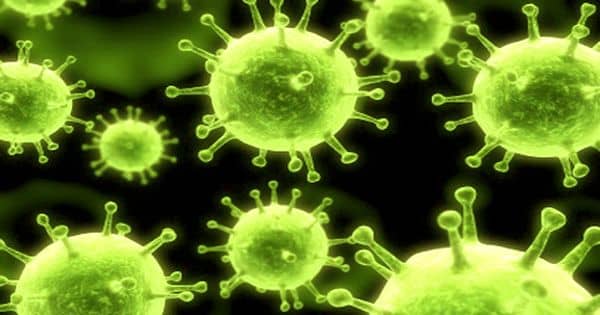In Iowa, honey bee colonies were placed next to soybean fields, and researchers monitored the bees’ health throughout the growing season. The bees fared well for most of the summer, surprising the researchers. The colonies flourished, put on weight, and increased their honey reserves.
But in August, the trend reversed. By mid-October, most of the honey was gone and the overwintering brood was malnourished, the team discovered.
“We saw a feast-or-famine kind of dynamic happening, where in the middle of the summer they were doing great. In fact, the hives in highly agricultural areas outcompeted hives in areas with less soybean production,” said Amy Toth, a professor of ecology, evolution and organismal biology at Iowa State University who led the research with ISU entomology professor Matthew O’Neal and University of Illinois entomology professor Adam Dolezal.
“But then they all just crashed and burned at the end of the year,” Toth said.
In subsequent studies, the affected hives were “rescued” by the researchers by being relocated to rebuilt prairie areas with lots of late-flowering prairie species. Those hives recovered and were better equipped for the winter.
“The findings, published in the Proceedings of the National Academy of Sciences, offer a more nuanced view of the role of agriculture in honey bee health than was previously available,” Dolezal said.
“There’s been a lot of interest in how bees respond to agriculture,” he said. “There’s been work on pesticides and predictions that the highly monocultured agricultural landscapes have lost a lot of floral resources.”
“Some studies have found, however, that honey bees do better in agricultural areas than in other landscapes,” Dolezal said.
“One hypothesis about that is that bees near agricultural zones have more access to flowering crops and weeds like clover than those near forests, which can have fewer floral resources,” he said.
The new research seems to support this idea. The team collected samples of pollen from plants that foraging bees visited on their route back to the hive to determine which plants the bees preferred.
Some studies have found, however, that honey bees do better in agricultural areas than in other landscapes. One hypothesis about that is that bees near agricultural zones have more access to flowering crops and weeds like clover than those near forests, which can have fewer floral resources.
Professor Adam Dolezal
“Over the entire year, more than 60% of their pollen collection was from clover,” Dolezal said. The study did not determine which plants supplied the nectar, however.
“This experiment was designed to establish how commercial farmland surrounding a honey bee colony supports its growth and survival,” O’Neal said. “More than 80% of Iowa is dedicated to agriculture. And while the two most important crops do not require bee pollination, corn can provide pollen and soybeans produce a lot of flowers, which can be a source of nectar for honey bees. The weight gain of a hive is due to honey, which comes from nectar.”
O’Neal was surprised by how frequently honey bees discovered clover in landscapes dominated by corn and soybean.
“Most of the field edges are mowed and can contain clover,” he said. “This little bit of land could be offering a significant source of food.”
Soybean and clover bloom until late July in central Iowa, where the study was conducted. In early August, that food supply dwindles to nothing, however.
Between early August and mid-October, the weight of the study hives near to soybean fields decreased by an average of more than 50%, the researchers discovered. Even before the cold weather arrived, the bees started depleting their winter supplies.
Honey bees must collect enough nectar and pollen from the surrounding areas to last them through the impending winter. Honey, a necessary food for overwintering bees, is made from nectar, and pollen offers additional nutrients like proteins and lipids.
The last generations of bee larvae typically undergo distinctive physiological changes as winter draws near, better preparing them for the challenging season.
“The winter bees have higher fat stores and their aging is slowed so they can get through the winter,” Dolezal said. “But we found that the winter bees near soybean fields did not have the same level of fat stores.”
The bees moved to prairie sites in August developed higher fat stores, however.
“This suggests that the rebound the hives experienced when we put them in the prairie also trickled down to the individual bees,” Toth said. “Their nutritional health had also improved by being in that prairie habitat.”
The scientists do not advise beekeepers to relocate their hives to prairies. According to the experts, remnant prairies are uncommon and too tiny to support numerous colonies. Native bees may suffer if honey bee populations are overstretched. Instead, the team is experimenting with a strategy that involves planting 5- to 8-acre sections of recreated prairie inside or next to agricultural areas.
According to the team, these strips prevent nutrient runoff from agricultural fields into waterways, reduce erosion, and may even provide food for bees during a critical stage of their life cycle.
















